#lethal bob-omb
Text
LEGO Super Mario:
Super Mario 64 Question Mark Block
Set: 71395
2021
Pieces: 2064
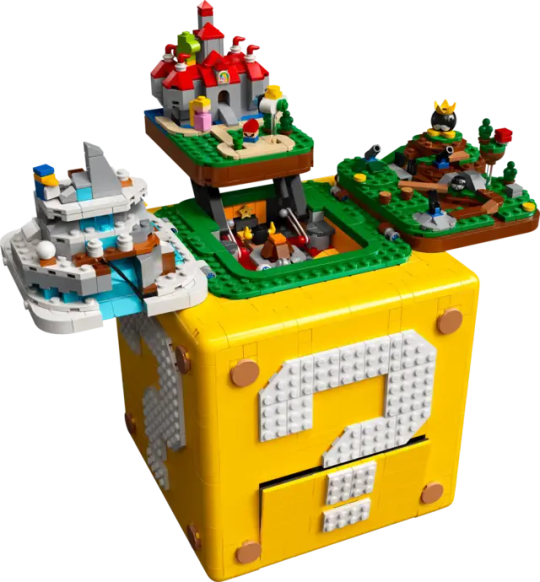
#mario day#mar10#lego#lego builds#lego sets#lego bricks#lego super mario#lego mario#mario#super mario#super mario bros#mario bros#question mark block#super mario 64#mario 64#princess peach#bob omb#bob omb battlefield#cool cool mountain#lethal lava land#king bob omb#chain chomp#yoshi
12 notes
·
View notes
Text
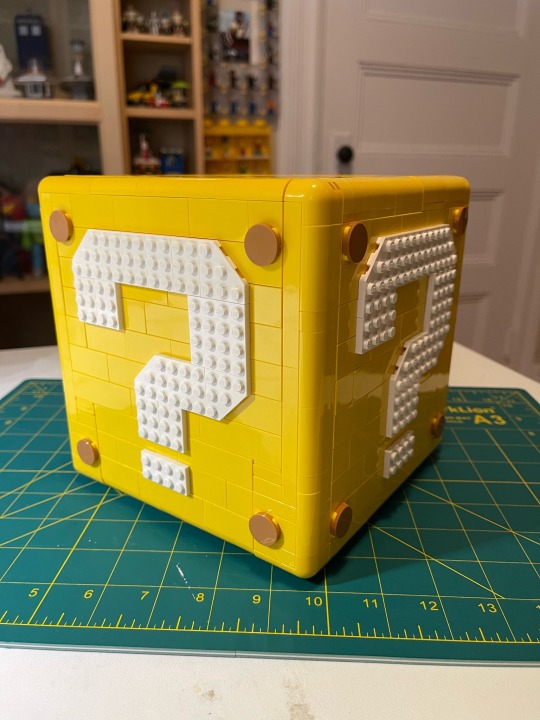

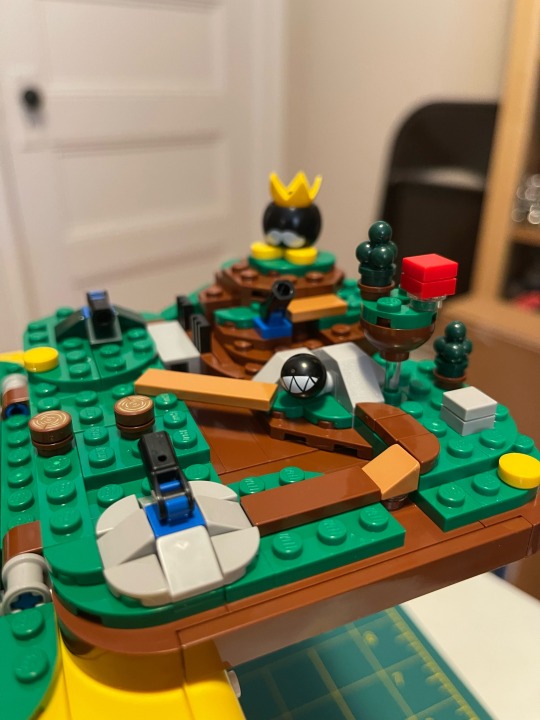



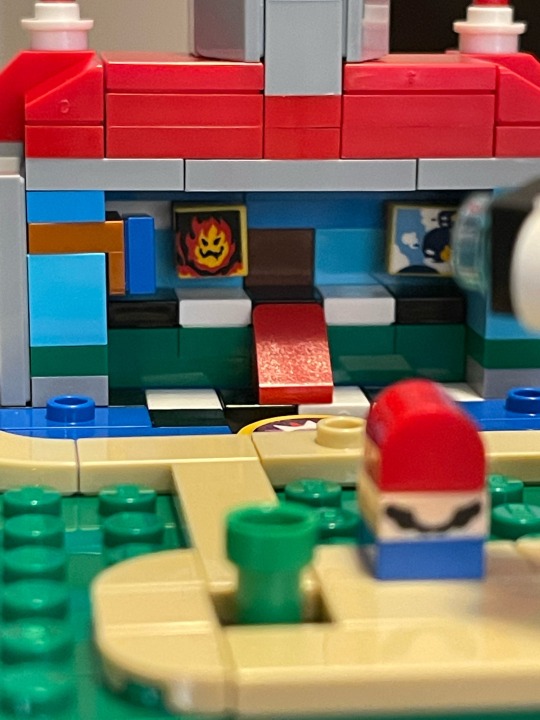
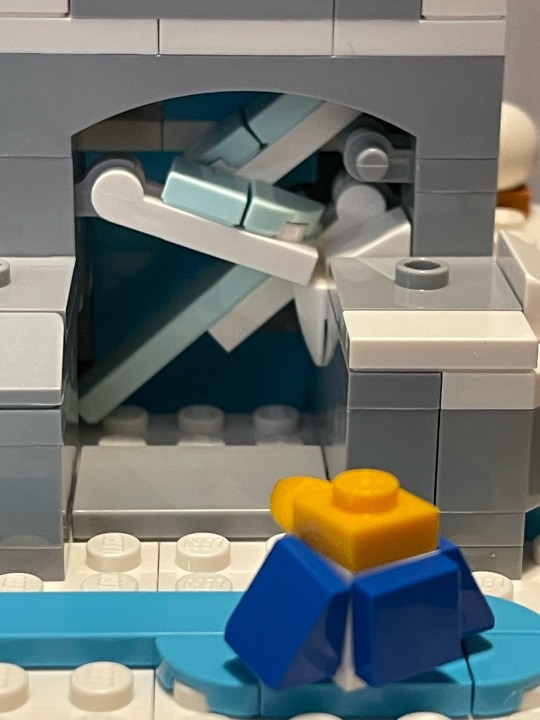
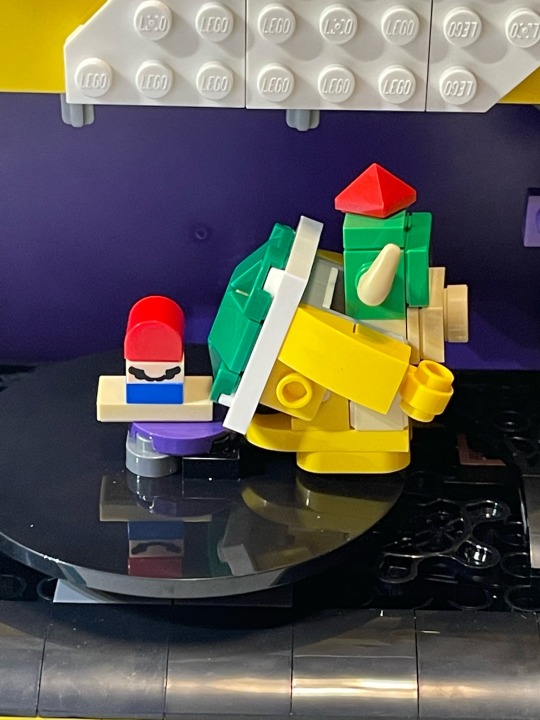

#legophotography#lego#keeping my sanity#lego photography#toyphotography#super mario 64#bob-omb battlefield#cool cool mountain#lethal lava land#princess peach’s castle#set 71395#2064 pcs
9 notes
·
View notes
Text
my shower thought today was about how i hate PLAYING desert areas in 90% of games, but the desert THEMES are always my favorite, so just a poll for fun! :D
examples:
hub worlds - Toad Town, Peach's Castle, Rogueport
grassy - usually the first world you start in which is jazzy or upbeat, like Bob-omb Battlefield, Lineland Road or the main overworld themes
wooded/spooky - Forest Maze, Somnom Woods, Chucklehuck Woods
desert - Dry Dry Desert, Shroom City, Western Land
water - Dire Dire Docks, Lake Lamode, Sunshine Seaside
volcano/jungle - Lethal Lava Land, Lavalava Island, Melty Molten Galaxy
chilly/snowy - Cool Cool Mountain, Snowman Park, Shiveria Town
underground/cave - Creepy Cavern, The Underwhere, Hazy Maze Cave
clouds - any of the athletic/obstacle course themes
final dungeon - Palace of Shadows, Koopa's Road, Origami Castle
35 notes
·
View notes
Note
What do you think the deal is with some of the PiT enemies? There are Dry Bones found in Yoob's Belly despite Yoob having trouble eating Koopas, Handfakes somehow knowing what present-day Bowser looks like and working with his minions, and the Shroobs, despite a language barrier, managing to enlist non-Shroob minions like Ghoul Guys, Lethal Bob-ombs, and probably Soul Bubbles and Snoozorbs (both possibly alien and meant to look creepy but don't share design traits with the other Shroob enemies).
Good question! I believe a lot of the enemies in Mario & Luigi: Partners in Time were unfortunately designed without the context of the game in mind.
However, there are potential explanations for each of these things.
Yoob seemingly doesn’t have trouble eating all Koopas. It eats Baby Bowser just fine. While we can’t say for sure why he didn’t eat Kamek or Kylie, it might be as simple as “he went off their taste”.

Another possibility is that the Dry Bones aren’t Koopas that Yoob has eaten, but rather pre-existing Dry Bones that the Shroobs stationed within Yoob as guards, along with the Bullies and RC Shroobers.
Handfakes are an interesting case. There are a few possibilities:
Perhaps Bowser’s appearance is common amongst his species, much like with Toad and Yoshi, therefore an individual identical to Bowser could’ve existed at the time. Bowser even shares his Japanese name with his species, much like those characters do. This would also align with Bowser (Blue) from Super Mario Bros.: the Lost Levels and the Koopa Kids from Mario Party having incredibly similar appearances to Bowser. Personally I’m not a fan of this idea, however.
Perhaps the Handfakes somehow saw Bowser, when he briefly fell into the past and wandered around Thwomp Volcano, and decided to copy his image then.
Perhaps Bowser’s future image was predicted by wizards using crystal balls, like Merlon or Kamek, and handfakes used an illustration of this image to scare others. It’s possible that the handfakes could’ve even predicted the future themselves. They’re found on Star Hill after all, and the Stars have the ability to see into the potential future.
Finally, perhaps handfakes are able to produce images of enemies, extracted from the minds of those they face. Since they were fighting Mario and Luigi, they were able to produce images of future Bowser from their memories. This one is my personal favourite, and would explain them using Bowser’s Minions in general.
As for how the Shroobs were able to communicate with non-Shroobs, keep in mind that the language used by the Shroobs is still a complex, learnable language. Some other alien species may speak the same language as the Shroobs, while some Shroobs also definitely speak English. Remember that Elder Princess Shroob speaks English, both as the “Star Sprite” and once she’s been released from the Cobalt Star. Even if they couldn’t speak to each other, it’s possible the Shroobs used mind control on them, much like what they did to the Hammer Bros. in the Vim Factory.
It’s also worth noting that Bob-ombs, and maybe even Shy Guys could have originated in space as well, though that’s a post for another time…
Thanks for your question!
7 notes
·
View notes
Text
Burnt Luigi
Burnt Luigi is a creepypasta/arg created by JosephTheSnail (or JosephTheSnailShow). The story explains about a weird copy of Super Mario 64, an installment of Nintendo's Super Mario franchise, where the player supposedly activated an easter egg that shows Luigi burning alive and becoming disfigured afterwards.

I love Nintendo. The console I grew up with was the Nintendo 64; the games on the console are alright, but the one I liked the most was Super Mario 64. Unfortunately, I just realized that I don’t have a copy of Super Mario 64; I looked everywhere and couldn’t find one—only a dusty Nintendo 64 console I have.
I shrugged and asked my parents if I could get Super Mario 64 again; they agreed, and I went across the street to the nearby GameStop next to Walmart, because it's a submall with GameStop—I found the game, brand new, and gratefully purchased it—but there wasn't any short message written in sharpie on the cartridge or anything eerie from one of those haunted game stories I'd seen before.
I returned home, dusted off the console, and turned on my Nintendo 64 to begin playing, and the game began as it usually does: I was greeted by the head of Mario, I pressed START, and it played the cutscene where Mario jumped out of the pipe; I didn't find anything weird; it was like any other Mario game. Keep in mind that this game was not cheap; it cost the exact same as what you would expect from a Super Mario 64 copy.
Anyway, when I first started the Bob-omb Battlefield level, I collected stars one by one.
After I reached the top of the mountain, King Bob-omb came there to greet Mario and say his line. For some reason, his brother is mentioned in the text, but I don't remember what it said because I was focused on the good part of the level, fighting King Bob-omb. I did notice the text though; here's what he said:
"I'm the Big Bob-omb, lord of all exploding matter, and king of global ka-booms! How dare you scale my mountain? By what right do you set foot on my imperial mountaintop? You may have eluded my guards, but you'll never escape my grasp. And you'll never take away my power star. I hereby challenge you, Mario! If you want the star I hold, you must prove yourself in battle. Can you pick me up and hurl me onto this royal turf? I don't think you can!
Don't disappoint Luigi."
I didn't care since there's nothing weird about hearing Luigi get mentioned in any of the Mario series. I finally collected the star after I defeated King Bob-omb.
Nothing really weird happens; it's just me having fun.
But I played the game until I unlocked the basement after defeating Bowser and getting the key; I didn’t go into any detail because nothing fascinating happened, and then I entered the basement.
This area always creeped me out as a kid; I don’t know why. I just walked around messing with my N64 controller for the fun of it; I don’t know what I activated, but I might’ve activated a secret, and eventually, I reached the part of the basement where the picture frame of Lethal Lava Land is.
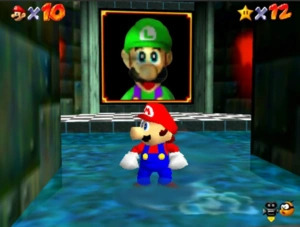
For some reason, instead of the figure in the picture frame, it was Luigi. For some odd reason, this version of Super Mario 64 is so dedicated to Luigi that it's almost like the "Year of Luigi" thing is still continuing; I personally didn't find anything wrong with it since I like Luigi as a character after all.
Again. It didn’t seem too out of the ordinary because Luigi was planned to be in the game in the beta test days, but I just jumped into the picture frame, and I was sent to the level afterward.
Lethal Lava Land was the same as it normally should be, but some platforms were missing and coins were gone.

I began looking for stars to collect in order to unlock a level or star room. I eventually arrived at the platform where Mr. I was supposed to be, but instead of Mr. I, Luigi was standing there on the edge, not moving at all. I approached him to see if he was just Mr. I with a different model; this could have been a modded version of Super Mario 64, a personalized copy, or something, but I accidentally pushed him into the lava.
I felt very bad for him.
His screams and cries for Mario were not distorted or recorded by a different person; they were made by Charles Martinet, the voice actor of Mario and Luigi.
After Luigi’s flesh melts and he drowns in the lava, a star flies out of the lava, and I collect it.
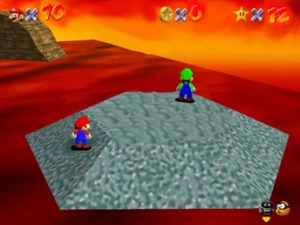
I was instantly sent to Peach’s castle, but for some reason, I was knocked out of the picture frame like Mario does when he fails a level. I noticed that the water was red, almost like blood, and Mario had a terrified expression on his face.
Right behind him, Luigi looked different—almost like a zombie, his clothes were darker, and his skeleton was visible. His clothes were torn as well. Every time I tried to find my way out, it was like the endless staircase you need to go up to defeat Bowser. but every door was locked, and the gruesome imagery of Luigi will stay on my mind until the day I die. It sounds a little dramatic and morbid, I know.

But the eerie part is that Luigi in the picture frame had 1080p graphics, and it’s pretty eerie because the game doesn’t have decent graphics since it’s on the Nintendo 64. Let's be honest here. You've seen the games like Super Smash Bros. and the others, and the quality is not very good, in my opinion. The picture of Luigi's disfigured body in the picture frame threw the low-quality graphics out the window.
I was correct; the bloodied water rose, and Mario drowned in it while performing the drowning animation; there are no more lives since it took them all, and it returned me to the intro with Mario's head.
The Aftermath
This was originally planned to be in the game. I was searching through the game files on Super Mario 64 with my computer, and here’s what I found—the file name was "Burnt Luigi.fbx" Luigi's model was the same shape as the original Luigi model, but with some textures and polygons missing; there was even a bone in his right arm.
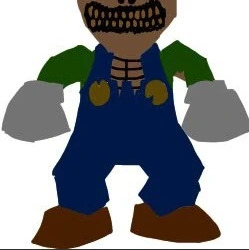
#urban legends#nintendo 64#super mario 64#creepypasta#alternative reality game#arg#easter egg#burnt luigi
4 notes
·
View notes
Text
0 notes
Photo

Using a Random Mario Species generator my friend made, I generated my own Paper Mario partners! I’ve designed 8, but here’s the first 4. Antdrew is an Antotto, an ant enemy from Super Mario Land 2. I imagine Antdrew being the starting partner with the Tattle ability. Igno is a Lethal Bob-omb, a Bob-omb thats always lit from Mario & Luigi: Partners in Time. Redthorn is a Chomp, which is a big plant enemy from Donkey Kong Country Returns. Finally, Pearl is a Virus from Dr. Mario. I thought it was clever to have a Virus with no color, and therefore no weakness to Megavitamins. What a fun art style to emulate!
81 notes
·
View notes
Photo
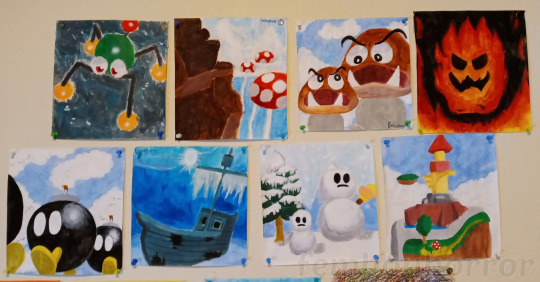

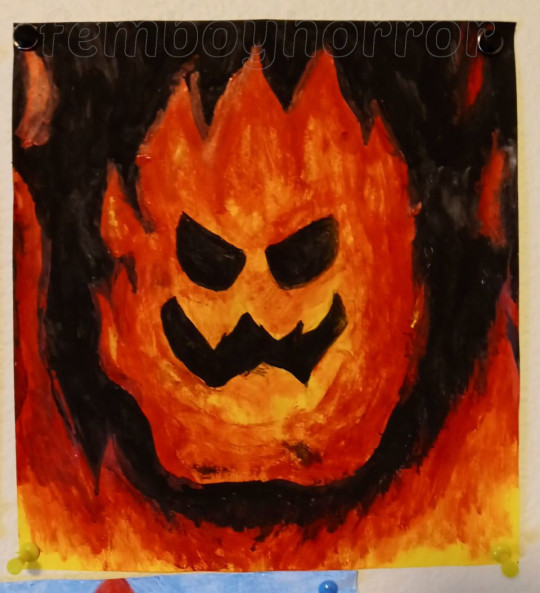
~ 𝓣𝓱𝓪𝓷𝓴 𝔂𝓸𝓾 𝓼𝓸 𝓶𝓾𝓬𝓱-𝓪 𝓯𝓸𝓻 𝓽𝓸 𝓹𝓵𝓪𝔂𝓲𝓷𝓰 𝓶𝔂 𝓰𝓪𝓶𝓮! ~
Reblog this or Mario's-a gonna take your knees!
#super mario 64 paintings#sm64 repainted#sm64 aesthetic#n64classic#bob omb battlefield#lethal lava land#finally added LLL and remade my BOB paintings#thus now having a complete collection of all the traditional world paintings in sm64#i still want to do the bowser paintings at some point#and i might paint the TTC clock#but for now i'm pretty proud of this#mutt.paint#QT 3.14
4 notes
·
View notes
Photo

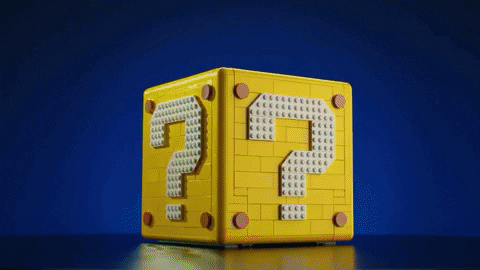
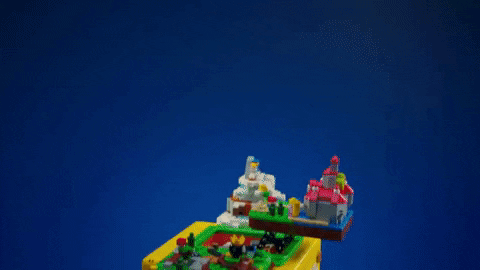
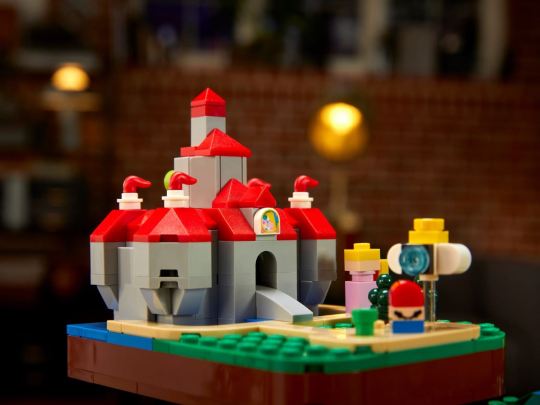

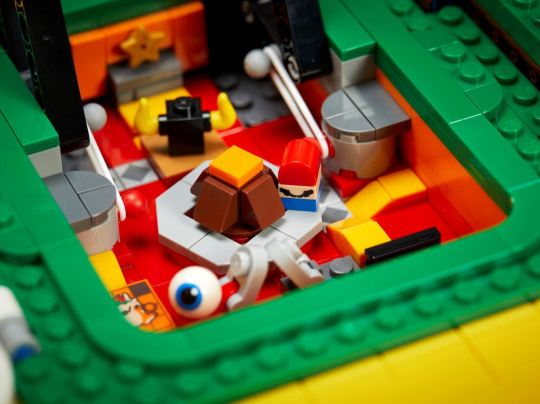


youtube
It’s time to rekindle fond memories as I build, display and play with this LEGO Super Mario 64 Question Mark Block! Celebrating 25 years since the classic video game’s launch on the Nintendo 64, this 2,064-piece brick-built set features a “?” Block that opens to reveal instantly recognizable levels from the game: Peach’s Castle, Bob-omb Battlefield, Cool, Cool Mountain and Lethal Lava Trouble. There’s even 10 microfigures of iconic characters to place in the detailed scenes too, making this 3D model a perfect way to pay tribute to one of the most beloved console games of all time! 🕹️
Bonus Fun Fact: The “?” Block is a staple of the Super Mario series, but it didn’t actually appear in Super Mario 64! Instead, Mario receives specific power-ups from red, blue, and green blocks that are activated by triggering the corresponding “!” Switches: red for Winged Mario, blue for Vanish Mario, and green for Metal Mario.
#lego#legos#lego sets#lego store#mario#super mario bros#mario bros#super mario 64#mario 64#n64#nintendo#nintendo 64#video games#video game#nostalgia#gaming#gamer#console games#question mark#collecting#collection#collectibles#collector#toy collection#toy collector#toys#model#replica#lego mario#classic video games
11 notes
·
View notes
Text
Super Mario Fact #14: My uncle works at Nintendo and he told me how to unlock Luigi in the N64 version of Mario 64:
(NOTE: This method will only work if you are using a GREEN N64 controller.)
1. 100% the game once on each save file
2. Delete all 4 save files and start a new game on File B (It HAS to be File B or it wont work)
3. Get the first 2 stars in Bob-Omb Battlefield in less than 5 minutes
4. Go to the Star Statue and run around it counterclockwise 64 times, then 2401 times clockwise
5. Play through the game as normal until you unlock the basement
6. Collect EXACTLY 64 coins. Do not collect more untill step 8
7. Catch MIPS and Drop him in front of the wall that leads to Shifting Sand Land.
8. Enter Hazy Maze Cave and ONLY collect the 100 coin star, not any of the others (This will only work if you are collecting this star for the first time on this save file)
9. Go to the Star Statue and drown in the pond
10. Go to the volcano in lethal lava land and collect any of the stars in there
11. Play through the game normally untill you unlock the second floor
12. Go to tick tock clock and collect every star EXCEPT the 100 coin star
13. Play normally until you have EXACTLY 70 stars. (Make sure not to collect the ttc 100 coin star yet) Defeat the final boss and beat the game.
14. Go back and obtain all 120 stars (NOW you can get the ttc 100 coin star)
15. Go back to the first floor and go to the cool cool mountain room. Stand on the left side of the room and wait until you hear boo's voice
16. Select the 6th star mission in Cool Cool Mountain
17. Beat the fat penguin in a race 7 times in a row (If you loose once you have to delete your save and restart the entire unlocking process from step 1) (Also using the shortcut counts as loosing)
18. Give mama penguin her baby, and then throw the other baby off of a cliff. Then, talk to mama penguin again. After doing this, exit the level withou collecting a star.
19. Go to big Boo's haunt and Kill All of the Boo and Mr I enemies
20. Go talk to yoshi on the roof of the castle
21. Jump off the castle and die by fall damage
22. Go inside and ground pound the sun thing on the floor. You will hear Luigis voice say "Its-a luigi time!" and the 121st star will appear. Collect this star
23. After collecting 121 stars, go to the metal cap stage. A Hammer Brother enemy will appear in the stage. Kill it to get the 122nd star (Note that it only has a 1/256 chance of spawning every time you enter the level, so you may need to enter and exit the level several times)
24. Collect 2401 coins
25. Go back to the Star Statue and punch the "L is Real 2401" sign
26. Go back to Big Boo's Haunt and collect the Ghoul Medal. After doing this, a 122 star door will appear in peach castle. Behind this door is a colectible clock hand.
27. Take this clock hand and go to tick tock clock at exactly 3 AM (In real time, not in game time). A yellow switch will be at the top of ttc. Hit the switch
28. Go the mirror room. A vanish cap will now be in the room. Collect it and go through the mirror
29. You are now in the mirrored version of the castle. Go to the mirror version of Jolly Roger Bay
30. Watch the death box go back and forth 2401 times. Ground Pound it, and a Luigi hat will appear. Collect this hat.
31. Go back to the Star Statue and [REDACTED]
32. Quickly swap the cartridge with an Ocarina of Time cartridge (Due to an error, some data and memory will transfer between games when quicky swapped)
33. Go to the "L is Real" Sign in Dodongo's cavern and hit it with your sword while wearing the white tunic (only unlocked after completing the sky temple)
34. Switch it back to the Mario 64 Cartridge
35. Kill the Wario Apparition
36. Sacrafice MIPS to king bob-omb
37. Shove the Ocarina of Time Cartridge up your ass
After following all of these steps, luigi will appear. Go up to him and talk to him on top of the castle roof. He will now be availible as a playable character on all save files

20 notes
·
View notes
Text
Super Mario 64
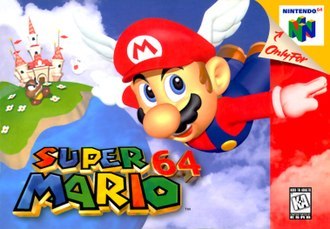
To start things off, i thought I’d play a game i played a lot of as a kid, but never quite finished - When i was a kid, i had a DS and Super Mario 64 DS, which i played an absolute TON of. I’m pretty sure it was the only DS game i had for a very long time, so you can imagine i played the crap out of it.
That was, until i ended up accidentily destroying my DS lite and cartridge with water. I was pretty heartbroken, though i did eventually get a DSI (which to this day, is my baby) but I never got a new copy of Mario 64 DS, and it always ate away at me in the back of my mind that i never finished the game.
So, i figured now that I have 3D All stars, and I’ve decided to do this whole Smash Journey thing, it was finally time to finish it, even though I’m playing a port of the original rather than the DS version. I’m sure there will be a few things I’m going to miss from the DS, but that’s okay.
Anyway, now to talk about what i actually thought of the game. I still think it’s a really solid 3D platformer even to this day, although a few parts of it are quite a bit frustrating, for example I really don’t like the majority of red coin stars, and i absolutely hate using the wing cap, but those aren’t enough to really taint the experience for me, this is a great game.
I guess i should go over each level individually, so let’s start with our hub world. Peach’s Castle is pretty good as far as hub worlds go, though i do wish it was more clear what the actual purpose of each room was. Like, we have a few things like the aquarium, but what is the room with the Bob-omb Battlefield painting supposed to be? I think it would be a lot cooler if we knew what these rooms were for, like if there were furniture to make it clear that Bob-omb Battlefield’s room was supposed to be a study, or something. Still, though, I love how everything feels appropriately regal but not too snooty - it does actually feel like it belongs to Peach.
Bob-omb Battlefield is a fantastic first level. It looks cool, it’s all pretty and green, and the boss has an absolutely magnificent mustache. I remember just playing around here a lot as a kid, even after i had gotten all the stars here. Just a nice place, and i think one of the first areas people think of when they think of Mario 64.
Whomp’s Fortress is a pretty good level, not too much to say about it. What i can say is that i wish Thwomps and Whomps would get more spotlight in Mario, because they’re kinda neat and i wish i could see more levels built around them outside of Mario Maker.
Jolly Roger Bay. THAT GODDAMN EEL GAVE ME SO MANY DAMN NIGHTMARES AS A KID. As for the actual level... well, it’s a water level which I’m not usually a fan of in 3D games, and despite it being called “Jolly Roger Bay” there isn’t a whole lot of piratey stuff here, aside from the ship. I wouldn’t call it bad, but it’s far from the best level in the game.
Cool, Cool Mountain is alright. I had a pretty rough time racing the penguin down the slide, so i got pretty excited when i finally beat it.
Big Boo’s Haunt is a ghost house, and i personally LOVE ghost houses and other spooky stuff, so this one is one of my favorite levels. Boo are some of my favorite Mario enemies, too, so I’m always happy to see them.
Bowser in the Dark World is... Meh. Just a series of platforming and then you fight Ol’ King Koopa for the first time. Like Jolly Roger Bay I wouldn’t say it’s bad, but not my favorite.
Hazy Maze Cave was weirdly a lot of fun for me, despite the fact i remember hating it as a kid. Probably actually one of my favorite levels in the game, actually. I love the Metal Cap, too, easily my favorite power-up in this game.
Lethal Lava Land was pretty damn good too, it just feels a lot better to jump over lava than it is to jump over an empty void. The Bullies are another under utilized Mario enemy that i wish we could see more of.
Shifting Sand Land is okay. I’m not usually someone who really likes desert levels all that much unless they’re doing something unique, and this one really isn’t. Nothing really wrong with it though, aside from that.
Dire, Dire Docks was actually good despite it being a pretty generic water level. I think it has to do with the way it was designed, the stars here just feel particularly satisfying to collect.
Bowser in the Fire Sea is what i like to see from a Bowser level. Lava and Fire everywhere, lots of perilous jumps and enemies. I vastly prefer this to just a weird void.
I absolutely HATE the Snowman and Penguin in Snowman’s Land. I had so much trouble getting past them. Otherwise the level is pretty good, but i despise those two so much.
Wet-Dry World is pretty frustrating and confusing and is my least favorite level in the game. I also have a lot bad memories of playing this level as a kid, so I’m not a fan of it to say the least.
Tall, Tall Mountain is a lot of fun, though I struggled far more than i should have with that damned Monkey.
Tiny-Huge Island is my favorite level in the game. It’s got it all - a fun gimmick, good platforming, and great stars to go after. I adore this place.
Tick-Tock clock was fun, but I’ll admit i found the gimmick kinda annoying because i kept getting my timing off when jumping into the clock.
The last regular level in the game, Rainbow Ride. This place might just be my second favorite level, it was just a good fun challenge.
And finally, Bowser in the Sky. Like Bowser in the Dark World, i felt this place was pretty mediocre. Not great, not terrible, but for the final level it should’ve been a lot cooler.
And i guess that concludes it! Overall, i think this game still holds up alright even after this many years, though i do miss certain levels from the DS version and the other characters. Next up, I’m going to tackle THREE really short games one after the other (Kind of.)
Thank you so much for to reading my thoughs!
4 notes
·
View notes
Text
Why Super Mario Sunshine is kind of bad (and how to fix it)
It’s safe to say that in our current hellscape that there are few games in the Mario franchise with as strong of a following online than Super Mario Sunshine. And how could it not? It’s so unique and fun that most people could probably have a good time with it. But it’s interesting to note just how much this perspective has changed over time.
When Sunshine came out it was considered by some to be the black sheep of the series. Or at the very least a noticeable step down from 64. There’s quite a lot wrong with Mario Sunshine. While there’s a great game at the core of this thing, there’s certainly a few miles of paint-like goop to sift through.
What’s frustrating is that a lot of these problems could have been solved with just a bit more development time. Mario Sunshine was rushed. This can be observed even without prior knowledge, but it becomes plainly evident when you look at some of the prerelease videos. In some instances it doesn’t even resemble the final product. Even at E3 2002, just three months before launch, there are a lot of noticeable differences to the final product.
Because of this rushed development, a lot of corners needed to be cut to pad out the game’s relatively lacking amount of content. The result is a game that is fun and well designed in some instances but a complete and utter disaster in others.
The issues plaguing Mario Sunshine were emblematic of a Nintendo-wide issue. At the start of the GameCube’s life, many prominent franchises were rushed along development to meet strict deadlines to fill out the console’s thinning library and boost sales. The Legend of Zelda: The Wind Waker is a textbook example. A lot of people had issues with that one too when it came out. Despite some clearly dumb points about the game’s art style, there’s definitely a lot to say about how Wind Waker pads out limited content. Doesn’t that sound familiar?
Thankfully, in 2013, the Wind Waker received an HD rerelease for the Wii U. Alongside a hefty visual overhaul, there were many under the hood changes to make the game an overall smoother experience stemming directly from those 2003 critiques. Sailing is made way simpler and faster in this version and the Tingle-inspired back-half of the game is shortened significantly. These two changes alone make this version superior, at least to me.
In the years since, I believed that Sunshine could have benefited from a rerelease similar to Wind Waker. Not necessarily in terms of its visuals (which I think have held up rather well) but in terms of its structure. Some small changes to the way Sunshine progresses could really benefit it overall, and I believed, erroneously, that it was only a matter of time before it received this treatment.
But we live in a post-3D All Stars world, and Nintendo’s response is clear. They believe Mario Sunshine is perfectly fine as is. Just touch up some of the textures, give it a resolution increase, and you got yourself a solid product. And yeah, its still pretty fun like this. But its hard to look past the missed potential in refining some of Sunshine’s rougher edges.
Which is what I plan to outline in this video. If I were to be given the reigns to nosedive Nintendo’s current plans to revamp a 2002 GameCube game, what would I change? After a suitable amount of complaining, I’ll discuss a fan project that comes close to doing what I think Nintendo should do.
So sit back, relax and let me refresh your body and spirit.
The first changes I’d make have to do with the frame rate. It’s evident that Super Mario Sunshine was supposed to be a 60 frames-per-second game. Some prerelease footage even shows as much. But somewhere late in development, the framerate was capped at 30, making it the only 3D Mario Game post-64 to not reach 60. Using Gecko codes, it’s possible to unlock the framerate and play at a pretty consistent 60. It’s so consistent that it starts raising the question of why Nintendo didn’t implement this into the Switch rerelease. This code isn’t emulator exclusive either, it also works pretty well when used on Wii consoles. Also, a hypothetical rerelease using the source code wouldn’t even have to deal with this anyway. But it’s good that the game works so well like this even without more structural changes. I don’t really need to explain the benefit of an increased framerate, so strike that one down.
And with that out of the way, it’s time to outline the biggest change my hypothetical Mario Sunshine remaster would make. One seemingly small but with major ramifications towards the rest of the game. But first, some background.
Super Mario 64 took a pretty big risk back in 1996 by significantly changing the main objective of playing a platformer. It was no longer about clearing a level. You aren’t going through these areas to reach an end point. The objective is now to find certain major collectibles, in this case power stars. But the game doesn’t want you to collect all of them. I’ve heard a lot of discourse recently about the boot-out system, but even when I was a kid I realized that 64 kicked you out of every level not just to pad out game length but to keep you moving around the castle.
64 is always inviting you to explore new areas with a constant trickle of new content the more total stars you collect. At first, the amount of stars needed to unlock a new level are small. The first area of the castle has every level besides Bob-omb’s Battlefield locked behind a small star total. And the amount needed to progress onto the next full area with five more major levels is only 8. But these star totals gradually increase over time, requiring 30, 50, and finally 70 stars to unlock new content. But what stars you got never mattered, just how many in total. This allows for free exploration where the player doesn’t have to think about where their next objective is. For instance, exploring pretty much every cardinal direction of Lethal Lava Land will lead you in the direction of a star. And because it doesn’t matter which star you get, it allows players to choose how long they invest in each level. Are the constant treks up Tall Tall Mountain or Rainbow Ride annoying you? Well all those stars are completely optional, you just have to compensate by completing more of the other levels. It’s an ingenious system that allows for a lower total amount of levels to feel more rewarding.
Super Mario Sunshine is practically begging to be like this. In fact, for the first few hours, that’s exactly how it works. New levels are unlocked progressively through getting Shines. But it doesn’t work in quite the same way. These shine totals are never outlined to the player. It shows you that you’ll eventually be able to use the Rocket Nozzle and has objects like the pineapple blocking Sirena Beach to make you yearn for a Yoshi. But you’re not told when these things are to be unlocked; it just sort of happens. Which is fine, it definitely makes the game feel more mysterious. But it lacks that forward momentum of 64 where your end goal is always simple and in the back of your mind. Oh, I need 30 stars to unlock this big door. Sunshine doesn’t have this despite literally operating in the same way. But it still maintains the ability to slowly unlock content to players through playing more of the game, which is good. And importantly, which stars you get for these gates aren’t important, just that you’re getting them at all. And if the game stuck to this principle, that would’ve been great.
Except it didn’t.
After the rocket nozzle is unlocked and Pianta Village becomes accessible, your total amount of Shines is never relevant again. Instead, game progression is contingent upon completing mission 7 of every level. Not every shine is valued the same according to the game. The progression is far more linear than in 64. You can no longer choose to avoid the Chuckster mission. Or the Sand Bird mission. Or the teeth cleaning mission. Or racing Il Piantissimo three times. Or fighting Gooper Blooper three times. Or fighting Petey Pirahna twice. Or defeating these same Piranha Plant Gatekeepers five times. Or even chasing down and squirting on Shadow Mario E L E V E N T I M E S. There’s a lot of repetition here which would’ve been eased simply by allowing the player to avoid doing these missions wherever possible. 64 had similar situations of reused content, but it’s not as egregious when there’s no incentive to collect stars you don’t want to.
This structure is also weird because there’s a ton of extra missions in this game. Some of the game’s most, err, fun segments are hidden away in Delfino Plaza. These can be some pretty time-consuming tasks. You know what I’m talking about. But that’s not all. Every course also has some bonus shines. Every secret stage has an additional Red Coin challenge. There’s some “cleverly” hidden shines even within certain missions. There’s even a mission 8 to every level. Every level also has a 100 coin mission which, just to get it out of the way, should absolutely not spawn the shine somewhere 100 feet away from you AND boot you out of the level upon collection AND not be possible in every mission. Like c’mon, Mario 64 got this right on the first try. So Nintendo went out of their way to put all these extra shines in the game, and yet none of them matter towards game completion. Which makes me wonder what the point of completing them is supposed to be?
All this extra content, regardless of quality, would benefit from a system similar to Mario 64. In its current state, there’s not much of a reason to even bother with these extra missions, especially when some of them are of questionable quality. On that same token, there’s some pretty fun missions hidden in this extra content, and it’s a shame that they aren’t more important.
Well, with that...
B L U E C O I N S
I almost forgot about you!
Blue Coins are pretty despised. But in concept they’re pretty smart to put in a game like this. It’s kind of like the Red Coins but on a broader scale. They’re packed into every little tiny corner of the levels, giving players more of a reason to explore the pretty environments. And once you collect 10 of them, you get a Shine Sprite from the local beavers. If these Blue Coin shines counted towards a grand total for game completion, Blue Coins could give players a nice buffer to replace some of the games more questionable missions. But just like all of the extra content, Blue Coins matter not one iota towards finishing the game. So, the only reason to collect Blue Coins at all is if you wanted to collect them all.
And that’s precisely why people hate them. Because collecting all the Blue Coins is an absolute nightmare. Let’s not even talk about how cryptic some of these coins are because honestly I’ll be here all day. Let’s instead talk about how impossible it is to know how close you are to getting every Blue Coin in a level. You can intuit through previous levels that it caps out at 30 per level, but the game never tells you that. There’s obviously no Blue Coin tracker like there is for shrines in Breath of the Wild, so if you’re frantically darting around Noki Bay looking for the one coin you missed that's hidden inside a wall for some reason, you’ve only got GameFaqs and Jesus to help you at that point.
To top it all off, just like the 100 coins missions, it’s impossible to get every Blue Coin in every mission in a level. Some blue coins are exclusive to certain missions. And it’s impossible to know how many are exclusive, which ones are exclusive, how many exclusives you’ve gotten, how many exclusives you need. Must I continue? This process is a disaster and gives Blue Coins a bad name. If they were put in a game like Mario 64, I feel like these things would have much more of a positive reputation. But as it stands these things are so toxic they’ve been reduced to POW switch fodder in later games.
I think Blue Coins summarize the issue with the extra content pretty succinctly. In a game like Mario 64, they’re harmless. But in a game where none of it is tied to beating the final level, the only purpose they have is 100% completion. And 100% completion should never be the focus of 3D Platformers. Some players prefer playing to completion but there’s a reason why most don’t. Fully completing a game is a soul commitment as much as it is a time commitment. It’s saying to yourself that I am willing to go through all the unfinished, janky, and cryptic content Mario Sunshine has to offer all for the extensive reward of… a different end screen. So yeah, there is no reason to get 100% of Mario Sunshine’s content. Even completionists are going to be disappointed. Not only is this content useless towards Any%, it’s aggravating for 100%, since fully completing the game is so unrewarding.
So, how do we fix this issue? Well to do that, let’s take a look at a mod that, in my opinion, does exactly that: Super Mario Sunburn, made by Epicwade.
The biggest change Sunburn makes is in its requirements for completion. Rather than Bowser being locked behind completing the seven Shadow Mario shines, the door to Corona Mountain is opened when the player attains 70 shines overall. If you recall, that’s the exact same amount 64 requires of the player to reach the final level. This change, by itself, adjusts Sunshine more towards what I would like it to be. But if you’re crazy enough to prefer the previous mode of completion, it’s still there as an option.
That’s not all, though. Now, when you collect a Shine, you’re no longer booted out of the level, and instead are simply asked to save and then you’re free to explore the rest of the level. My feelings on this essentially boil down to which mission I’m playing. I think the first two shines of Bianco Hills show this working pretty much perfectly. You squirt on the gatekeeper to get the first shine and then you’re immediately free to go forward and fight Petey Piranha. This feels far more natural than having to get booted out after the first shine and make the entire trip through the first half of Bianco Hills just to get back to where you just were. So in this case, it’s a positive.
However, Sunshine very often changes its course layout per mission. And when that happens, it feels a bit unnecessary to have to boot out of a level manually and boot back in just to get the next event to trigger. Sometimes you can chain getting a bunch of shines out in the open with a secret stage which resets the level upon entering the newly placed warp pipe at the end of it. But otherwise you’re stuck pausing and exiting. I feel this issue may be able to be streamlined by doing something like Mario Odyssey does, where collecting certain Moons boot you to the beginning of the level with the new mission unlocked. This might be outside of the reach of Sunshine modding at the moment, though.
This isn’t the only change set to make Sunshine more open. One of my favorite parts of the original game was that you could see other levels whenever you looked around. Turning at the start of Bianco Hills and being able to see not only Delfino Plaza but also the yet to be unlocked Ricco Harbor and Pinna Park was fascinating to me when I first played it. Sunburn takes this concept one step further by allowing players to travel from stage to stage. For instance, taking the river in Bianco Hills spits you out Ricco, and climbing a vine in Ricco allows you to travel back. This is a pretty novel idea and definitely makes replaying the game an entirely different experience, especially when combined with the lack of boot out. It does lose me a bit in how it necessitates for every level to be unlocked at the start. As I mentioned previously, slowly unlocking stages to the player by collecting whatever collectible they’re using allows for 3D Platformers to have constant forward momentum, which is lost here. But for those who’ve already played the game I think this is a fun option.
Other quality of life changes are strictly positives. In most instances, Blue Coins are now accessible from any mission in a level. I say most because it’s impossible for some of these coins to make the transition. But in the vast majority of cases, it’s been done. More coins have been added to each stage, along with Red Coins counting as collecting two coins just like in 64. This makes getting 100 coins a lot easier, especially when you’re doing multiple missions of a stage in a row. Two of the game’s weakest sections become far more manageable with these changes. There’s some smaller changes too, like being able to skip cutscenes, Blue Coins no longer bringing up a save screen, and Shadow Mario’s invisible health bar being restored. There’s also new content here, with additional secret stages being accessible from the main courses. Nothing mind-blowing, but it’s at least pretty neat to run around Outset Island as a FLUDD-strapped Mario.
Super Mario Sunburn addresses a lot of my issues with the original version, which was exactly the point. I’m not the first to bring up these issues, nor will I be the last. There’s so much potential within Super Mario Sunshine to be one of the best examples of its genre, so to see it fall short in such fundamental areas is undeniably frustrating. As usual with Nintendo, and even with other publishers, it’s often the community that sees itself to correct the issues with the games they feel deeply passionate about. Basically the only difference between Sunburn and an official Sunshine remake or remaster would be a significant layer of polish. That still might happen, but I’m not holding my breath at this point. So if you find yourself feeling similarly as I do about Sunshine, it might be worth it to check Super Mario Sunburn out. Here’s the download link again if you’re curious.
3 notes
·
View notes
Text
Ranking the SM64 levels
3 Bob-omb Battlefield: I’m starting the list with my third favorite because I can explain every other level in terms of this one. This is easily the most impressive level in terms of design. SM64 sorts its levels into “chunks” that connect in various ways. The exact borders between chunks and how finely we chop the level up into different chunks doesn’t quite matter. I find I like chunks better if they 1) interconnect so you can get to multiple different chunks from wherever you are. Bonus points if the game uses the Y axis to create some one-way connections like Bob-omb battlefield’s bridge that spits you back out near the beginning of the level if you fall. Extra bonus points if you can use some precise jumping to get around those limitations. 2) Has its own distinct element, either visually or mechanically, like the little area with the mounds when you climb up the very first ramp in Bob-omb battlefield. 3) Contains a pretty clear “first star route” to one specific other chunk, like the path up the ramp at the beginning, or the mountain “weenie” that you can see a path to when you get beyond the chain chomp and bridge. 4) There are at least a couple chunks that the first star route doesn’t touch at all, but you can still see. Both the area with the stumps you can run in circles around as well as the floating island you can see from your ascent up the mountain are good examples. The only reason this isn’t #1 on my personal list is because it is focused mainly on beginners who have literally never encountered a 3d game before. Climbing the mountain and freeing the chain chomp are both great, and the mountain contains plenty of opportunities to get up faster using more difficult jumps. On the other hand, it uses the wing cap and fairly precise cannon aiming, the first and second least fun things in the game.
Now, onto the worst levels:
15 Dire, Dire Docks: While swimming isn’t as awful to control as I remember it being when I was a kid, it’s still not great. This level uses currents to suck you towards death pits in a couple places, which isn’t fun. A few of the stars either include or are mostly built around having you navigate the weak end of the current, and there’s just nothing good about it. Plus, what’s the deal with water levels having segments connected only by lengthy narrow tunnels? Probably a loading thing, but it doesn’t help the design. The not-underwater part of this level is only used to make you do cycle-based pole jumping which is even worse than the death currents.
14 Tiny-Huge Island: Eh, this was such a creative idea for a level that I don’t begrudge it for not working. This level has chunks that only connect if you are the appropriate size, which is a good idea. Around half the things you need to do to get the stars are pretty good, too. However, big mario is just too big. If you turn at the wrong time you go into sliding down mode and there’s never a platform big enough for you to get your balance before falling off the mountain to your death. The level also feels a little unvaried. The chunks aren’t distinct and reuse the same few elements throughout without getting more challenging as you progress along the “first star route”.
13 Tall, Tall Mountain: This is one of two linear levels in the game, and is by far the less interesting. SM64 approaches linear levels as spirals upwards. In this case, around the mountain. I think there’s only a single place where you can take two different routes up. There’s not a lot to say. The platforming feels perfectly fine throughout the ascent. The slide is the most well-hidden place in the game, and I might have gotten frustrated looking for it if I hadn’t seen speedruns. This may have been ranked a little higher if it weren’t for the star that requires the most precise cannon aim in the game.
12 Cool, Cool Mountain: It’s a neat idea to start at the top of a level and be asked to descend in various ways. I think the problem is that too much of what you’ll actually be doing is trying to precisely control your slide down the same stretch and jump away at exactly the right place.
11 Rainbow Ride: This level isn’t structured like any other in the game. There are two points where the main path branches--once into three and the other time into two--but none of those branches reconnect, so it’s more like a path with a few self-contained sections off of it. I like the platforming quite a bit in this level, but don’t like how disconnected everything is from everything else. The main problem, though, is that the main path consists mostly of waiting around on a magic carpet with nothing to do but the occasional trivial jump. The difficulty of the platforming this late into the game means that deaths will happen, and it’s really a detriment that there’s no way around waiting on the carpets.
10 Lethal Lava Land: This level gets credit for being exactly what the game needed after the first set of levels + the first boss. Going into the basement for the first time and encountering a completely flat level is a big surprise, and the tiny safe paths surrounded by lava make the level look extremely perilous. The level is actually pretty tiny, which leaves each chunk with only enough space for one (1) thing to do. The interior of the volcano sure does add a lot, though. It’s like a miniature Tall, Tall Mountain with only a couple of stars.
9 Hazy Maze Cave: This level is pretty okay. The clumps are separated from each other by corridors and doors, which is why it seems like a “maze” but if you smushed them together the layout would be pretty typical. The clumps might be the most varied between each other, too. And this is the only level that contains a mini-level that unlocks a different cap.
8 Shifting Sand Land: The pyramid is cool. Having successive stars where you’re asked to: get to it, explore the inside, then find the secret entrance with a boss is unlike anything else in the game, and it’s neat. Things aren’t as interesting outside the pyramid, but there’s just barely enough there with enough variety to keep things fine. The outside is probably about as good as Lethal Lava Land, and the pyramid is vastly better than the inside of the volcano.
7 Jolly Roger Bay: Okay, I lied a little bit about Shifting Sand Land. In Jolly Roger Bay, there is one star you get by swimming into a sunken ship and hitting something that makes the water drain out. And if you’re thinking about it, that must mean that the ship was resurfacing. Sure enough, when you go back in for the next star, there’s a ship on the surface now! I think that is a little like the pyramid situation, though not quite as cool. This one ranks higher because it’s the only other level outside of Bob-omb Battlefield that feels like a playground where you can basically do anything that seems fun without penalty and if you do well, you’ll be rewarded. Unfortunately, it does the same long, narrow tunnel thing as Dire, Dire Docks. It’s also too easy to be particularly interesting, but of course with its placement in the game, it should not be any more difficult.
6 Thwomp’s Fortress: Most people’s second level, I assume. Does a good job at establishing patterns so that you know that Bob-omb Battlefield isn’t just a fluke, the whole game is that way. It’s a little on the small side, and the platforms that retract into the walls result in a lot of deaths that feel cheap for being so early in the game, but aside from that, it’s all pretty solid.
5 Wet-Dry World: Like with Lethal Lava Land, the game knows exactly what to hit us with to open up a new area after a boss. The goals become a lot less obvious here. There is no obvious “path” that leads through the chunks, so you’re mostly on your own. On the other hand, this is another level that doesn’t punish you for doing things wrong, it’s just more picky about rewarding you than earlier levels.
4 Snowman’s Land: More linear and more punishing than Wet-Dry World, SM64 knows when to break its established rules and when not to. This level does pretty much everything right. I particularly like that they brought back the “bullies” from Lethal Lava Land with the added challenge of ice physics, the hidden area in the igloo, and using the penguin as a shield against the wind.
2 Big Boo’s Haunt: This one uses the normal level approach to make the level feel like a real place. The separate, self-contained rooms would be too limiting, but the connections between the first, second, and third floor and the doors between rooms, plus the balconies make it just as nicely interconnected as everything else. In fact, the balconies in particular are clever real-world examples of ways that actual places have similar designs to SM64 levels. Most of the game is openly and even proudly abstract and artificial. The tension between realistic spaces and interesting level design is still being played out in games today, but here in 1996 we already see that Nintendo already knew what they were doing.
1 Tick Tock Clock: Here’s the other linear level. Based on the criteria I laid out right at the beginning, it seems like a linear level couldn’t be placed this highly, but although I’ve only mentioned “platforming” in passing so far, that really is the absolute core of the game. You run and you jump. If those two things didn’t feel good to do, SM64 would be a bad game regardless of how great the level design is. Tick Tock Clock gives you nothing but opportunities to run and jump well. If it’s like any other part of the game, it’s like being outside the castle right when you start, while you’re figuring out what the controls are. Only now, you already know how to do everything you need to do to beat the game, and you get a chance to do a lot of it.
3 notes
·
View notes
Text
OST #1 - Super Mario 64

Super Mario 64
Developer: Nintendo EAD
Publisher: Nintendo
Composer: Koji Kondo
Released June 23, 1996
playlist
oh, where to begin with this one...
this game is renowned globally as an absolute classic, an innovative title that essentially changed 3D platforming as we knew it to be, but who cares about any of that, how’s the music? most would call it excellent, being one of the most iconic soundtracks of the era, something everyone knows, but might it be overrated? has it aged well since 1996? let’s take another listen and find out!
(note to self: tumblr only allows 5 video embeds at a time, so i can only share 5 songs easily. oops!)
youtube
the soundtrack starts off with one of the cooler remixes of the classic SMB1 ground theme, with relatively simple instrumentation but absolutely mental drums, already setting the tone for everything to come and making it very clear that this is something new.
youtube
next we have one of the single most iconic pieces of video game music ever written and what is widely considered the main theme of the game, bob-omb battlefield! this song in and of itself is very well-written, a good example of what sound the N64 can produce, and above all, extremely catchy. it didn’t get its critical acclaim from nothing, it’s certainly a jam.
youtube
we also have the slide music, the next most iconic piece of video game music. i’m really glad koji kondo invented ska just for this game (i don’t think this is actually ska but i don’t know what else to call it lmao). it’s also a very interesting spin on the main theme, completely restructing the melody and chord progressions while still staying recognizable in a sense, and in general it’s really fun to listen to.
youtube
can’t talk about this game without giving credit to the pioneer of chill mario bangers, dire dire docks! i’m so glad video game composers collectively decided that water levels meant ballad-type pieces, because this stuff is sublime. i love the way the 6-bar phrasing makes the piece feel, it’s something i can’t particularly describe. OH one more thing about this is that it’s the first to show off midi channel fading, where individual channels can fade in and out at the game’s command, and in the case of the game, it does so as the player explores different areas, giving a very dynamic aspect to the levels it’s featured in that adds an extra layer of goodness to the song itself.
---
a few more mentions before i wrap this up with the last song:
- snow mountain is among the most jolly music i’ve ever heard and i can’t get enough of it.
- lethal lava land is a really cool song, with multiple parts interacting with each other in really cool ways - the percussion going a mile a minute at its own pulse with all these other really cool and distinct sounding instruments overlaying it makes for a very interesting sound that fits the stages well.
- haunted house isn’t called that for no reason, it sounds genuinely haunting and has a really cool sound to it in general. i think it also has channels that come in at different points of the mansion like dire dire docks did, like that marimba sounding instrument.
- cave dungeon is probably one of my favorite takes on the SMB1 underground theme ever made, up there with 3D world’s. no idea why the OST version doesn’t have the choir in the beginning like it does in-game, which is lame because that’s a high point for me, but the song is still excellent. i especially love the part where it’s just the choir and percussion when you’re in the deepest part of the cave where you find the metal portal. great track
- powerful mario: it may be a short loop but i LOVE the instrumentation and sound of it, really cool remix of a really cool remix of the starman theme
- metallic mario:
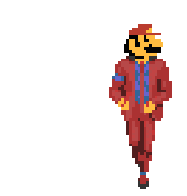
also short but MAN does koji know how to make these short power-up songs sound sick as heck
koopa’s road: when listening to this just now i literally just discovered the horn hits in the background at 0:18 so that should tell you how good this song is
bowser theme: my man koji was really in da booth making bowser sound absolutely dastardly
ultimate koopa: my man koji was really in da booth making bowser sound absolutely evil. the sounds and setting of this final boss fight have resonated with me for years, and of all the video game music i’ve heard (a LOT) this actually somehow remains one of my favorite final boss themes of all time.
---
youtube
as i said before, i only have so much room to add videos so i gotta skip to the end here. this credits song still hits hard after all these years, standing its ground as one of the most melancholy yet equally cheerful pieces of music in the franchise. it shows off the diversity of the game’s instrumentation wonderfully - not bound by the limits of gameplay sounds, it can use a lot more channel real estate, and it takes plenty advantage of it. also it may sound cheesy but that key change at the end still touches my soul in such a special way after all this time, and that IV - iv - I is just the icing on the cake (shoutouts to you if you know what that even means).
---
so is mario 64′s soundtrack any good? of course! i’d even say it hasn’t aged a day since it was released. sure, music nowadays is far more capable of producing good sounds than games back in 1996, but there’s something so nice about these old sounds that i just cannot let go of. i’ve always been in love with these really old instruments for whatever reason, their sound is just so charming to me, and it’s stuff like that that made me want to begin this project anyway.
back to the matter at hand though. mario 64′s soundtrack is honestly timeless - i’m of the belief that good compositions never age, and this game is hard proof. i actually never realized just how much i actually love this soundtrack until relistening to it in its entirety, and i’m glad i could start this project off on such a tremendous note as this one.
---
thank you so much for reading! if you have any questions or feedback, send me a message and i’ll try to get to it as soon as i can. check back here in a bit for pilotwings 64! see you then!!
---
RESULTS:
Top 3 Tracks:
1. Staff Roll
2. Ultimate Koopa
3. Lethal Lava Land
FINAL SCORE: 9.5/10
4 notes
·
View notes
Text
Super Mario 64 DS Playthrough
Introduction
This is my playthrough of Super Mario 64 DS. I will document what I did to get from start to finish. There are a total of 150 Power Stars in this game, which will be the finish points of each level playthrough. I will preface the narrative with the name of the level/mini course and the difficulty of the level I am touching base on.
The difficulty levels are listed below with its description:
Easy: The level was absolutely doable.
Moderate: The level was full of hazards, but otherwise doable. 1 to 2 lives lost.
Hard: The level was hazardous and required skill on my part. 3+ lives lost.
Along with the name of the levels, there will be a number connecting the level to a course. There are fifteen courses, and mini courses will not have a number preceding the name. The number and the name of the course is listed below:
Course 01: Bob-omb Battlefield
Course 02: Whomp’s Fortress
Course 03: Jolly Roger Bay
Course 04: Cool, Cool Mountain
Course 05: Big Boo’s Haunt
Course 06: Hazy Maze Cave
Course 07: Lethal Lava Land
Course 08: Shifting Sand Land
Course 09: Dire, Dire Docks
Course 10: Snowman’s Land
Course 11: Wet-Dry World
Course 12: Tall, Tall Mountain
Course 13: Tiny-Huge Island
Course 14: Tick Tock Clock
Course 15: Rainbow Ride
After the narrative, the number of coins, Power Stars, and keys collected will be displayed. I will post each level individually on my blog.
1 note
·
View note
Text
Tweeted
RT @IGN: The inconic question mark block from Nintendo 64’s Super Mario 64 is now available as a 2,000+ LEGO playset. The set also includes: Peach’s Castle, Bob-omb Battlefield, Cool, Cool Mountain and Lethal Lava Trouble. https://t.co/VZJgYB4eaO
— TribunaMag.com 🇨🇷🌎 (@RealTribunaMag) Oct 2, 2021
0 notes